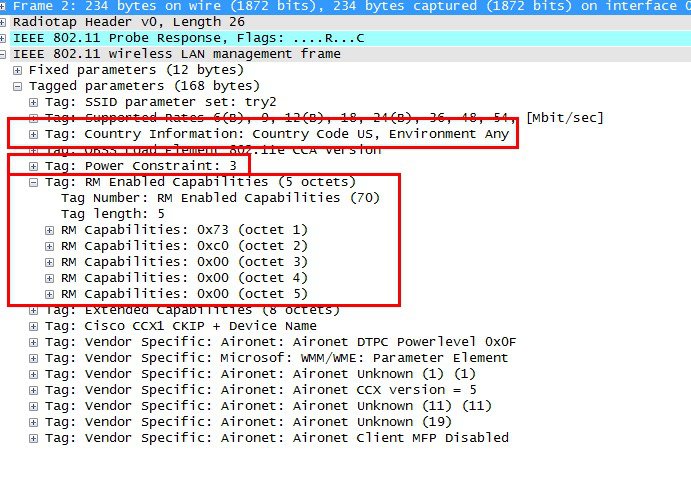The 802.11k allows 11k capable clients to request a neighbor report containing information about known neighbor APs that are candidates for roaming.
To facilitate roaming, an 11k capable client associated with an AP sends request to a list of neighbor APs. The request is send in the form of an 802.11 management frame, known as an action frame. The AP responds with a list of neighbor APs on the same WLAN with their Wi-Fi channel numbers. The response is also an action frame. The client identifies the APs candidates for the next roam from the response frame. The use of 802.11k radio resource management (RRM) process allows the client to roam efficiently and quickly.
To find an AP to roam from the neighbor list information, the 11k capable client does not probe all of the 2.4 GHz and 5 GHz channels. Client does not probe all the channels to reduce channel utilization, thereby, it increases bandwidth on all channels. It reduces roam time and improves the decisions taken by the client. Additionally, it increases battery life of the device as it neither changes the radio configuration for each channel nor sends probe requests on each channel. It avoids the device to process all the probe response frames.
Assisted Roaming with 802.11k
The 802.11k standard allows clients to request neighbor reports containing information about known neighbor APs that are candidates for a service set transition. The use of the 802.11k neighbor list can limit the need for active and passive scanning.
The assisted roaming feature is based on an intelligent and client optimized neighbor list. The 802.11k neighbor list is generated dynamically on-demand and is not maintained on the controller. Two clients on the same controller but different APs can have different neighbor lists delivered depending on their individual relationship with the surrounding APs.
Assembling and Optimizing the Neighbor List
1. The controller searches the RM neighbor table for a list of neighbors on the same band as AP, with which the client is currently associated.
2. The controller checks the neighbors according to the Received Signal Strength Indication (RSSI) between the APs, the current location of the present AP, the floor information of the neighboring AP from Cisco Prime Infrastructure, and roaming history information on the controller to reduce the list of neighbors to six per band. The list is optimized for APs on the same floor.
802.11k Information Elements (IEs)
Clients send requests for neighbor lists only after they associate with the APs that advertise the RM capability Information Element (IE) in the beacon.
The following elements are implemented in the beacon and probe response on the AP to ensure smooth integration with Apple handheld devices:
- Country Element—The Country Information Element contains the information required to allow a station to identify the regulatory domain in which the station is located and to configure its PHY for operation in that regulatory domain.
- Power Constraint Element—The power constraint element contains the information necessary to allow a client to determine the local maximum transmit power in the current channel.
- RM Enable Capabilities Element—The RM Capabilities element is five octets long. When this element is included in a beacon or probe response, it uses bit 1 to signal so that the AP can provide neighbor list. When used in an association request, bit 1 signifies the client's request for a neighbor list.

No comments:
Post a Comment